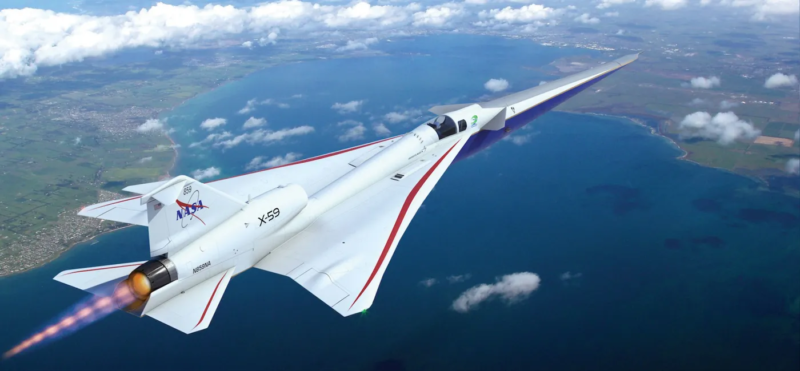NASA’s X-59 “Quiet” Supersonic Jet Passes Key Safety Review Ahead of First Test Flight

NASA’s new X-59 supersonic jet has successfully completed its Flight Readiness Review, marking a pivotal step toward its first flight.
The review, conducted by independent experts from across NASA, evaluated the project team’s approach to safety for the public and staff during ground and flight testing, as well as their analysis of potential hazards. This review provides valuable insights and recommendations to the X-59 team as they prepare for further analysis ahead of the jet’s maiden flight.
“It’s not a pass-fail,” said Cathy Bahm, NASA’s Low Boom Flight Demonstrator project manager, in a statement. “We’ll be getting actions from the board and will work with them to resolve those and work toward the Airworthiness and Flight Safety Review.”
The X-59, built by Lockheed Martin, is a key component of NASA’s groundbreaking Quesst mission aimed at reducing the sonic booms associated with supersonic planes. Supersonic flights over land have been banned for more than 50 years due to the disruptive vibrations and noise caused by airplanes when they exceed the speed of sound.
NASA’s X-59 quiet supersonic research aircraft sits on the ramp at Lockheed Martin Skunk Works in Palmdale, California, during sunrise, shortly after completion of painting. (Image credit: NASA/Steve Freeman) The X-59 is expected to generate a quieter “thump” instead of a loud sonic boom, thanks to its revolutionary and unique geometry. The elongated nose section of the aircraft measures 38 feet (11.5 meters) in length, making up a large portion of the entire aircraft, which is 99.7 feet long (30 meters).
The Flight Readiness Review is the first step in the flight approval process. Next up is the Airworthiness and Flight Safety Review, which will assess the project team’s response to the most recent review. Before the airplane can officially take flight, NASA officials will need to sign an airworthiness certificate and a flight request.
In the meantime, the team is preparing for further ground tests focused on systems integration, engine runs, and the effects of electromagnetic interference on the aircraft.
“It’s a brand-new thing that we are developing, even though there are components that have been on different legacy aircraft,” said Brad Neal, chairman of the X-59 Airworthiness and Flight Safety Review board. “As we get into integration testing here, it’s going to be a great opportunity to learn.”
More X-59 news: https://suspicious-zhukovsky.67-21-117-18.plesk.page/?s=X-59
Sources: AirGuide Business airguide.info, bing.com, space.com
